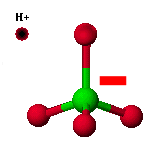Animation : Illusion of Understanding
There are times when I do something out of the ordinary in my General Chemistry class. I would ask for five volunteers, four females and one male. The five would stand in front of the class with the male student surrounded by the four female students. I would given them a piece of chalk. I would then turn my back and instruct the volunteers to pass around the piece of chalk among themselves and let me know when they had decided who would keep it. I then had to guess who among the five was holding the piece of chalk. Unless I was lucky, I would not be able to guess correctly. That stroke of luck did not happen that often so I would ask one of the girls to return to her seat so that now I would have to guess only from four individuals. Still, one in four was still not good and I would request another one among the volunteers to return to her seat. One in three provided better chances and of course, as I asked another volunteer to sit down, I would now have a 50:50 chance of guessing who had the chalk. After this brief exercise, I would ask the entire class a rhetorical question, "Was there was a point behind this activity?" And I would say, "Nothing, I just wanted to wake you all up." At this point I would show them the following figures I created on my webpage:
During one instance, I smiled when I heard one of my students in the front row whispered, "There was a point behind the activity." I was the proton and I was looking for that electron (the piece of chalk). Perchloric acid is the strongest in the series since the molecule stays dissociated most of the time, with the proton separated from the negatively charged perchlorate ion.
The above are examples of animated images. Each one basically cycles through a set of static images providing the impression that the image is moving. These are very crude examples, only the red minus sign is really changing from one image to the next. Each movement does require one static image. Thus, for a full-blown animation, a significantly larger amount of images may be required. This definitely requires time and effort so it is important to ask if animations do help in learning. The answer to this question is not quite clear. My own specific example is not a controlled experiment since it is coupled with a preliminary activity where volunteer students are hiding a piece of chalk from me. Therefore, it is important to examine closely the effects of animation on learning in a well designed experiment.
Eugene Paik and Gregory Schraw published recently in the Journal of Educational Psychology the following paper:
Learning with animation and illusions of understanding.
By Paik, Eugene S.; Schraw, Gregory
Journal of Educational Psychology, Vol 105(2), May 2013, 278-289.
Abstract
The illusion of understanding hypothesis asserts that, when people are learning with multimedia presentations, the addition of animation can affect metacognitive monitoring such that they perceive the presentation to be easier to understand and develop more optimistic metacomprehension. As a result, learners invest less cognitive effort when learning with animation. This study tested the illusion of understanding hypothesis with a randomized, double-blind, 2 × 2 factorial design using two different types of animation—representational and directive. Representational animation had a negative effect on learning, and directive animation had a positive effect. Both representational and directive animations induced illusion of understanding. Moreover, the animations induced multiple forms of the illusion. Consistent with expertise reversal effect, the animations induced more optimistic metacomprehension in low-proficiency learners but more pessimistic metacomprehension in high-proficiency learners. (PsycINFO Database Record (c) 2013 APA, all rights reserved)
Paik's dissertation has the same title, "Learning with animation and illusions of understanding.", and is available in its entirety from this link. The following is its abstract:
A controlled experiment was conducted on the effects of two types of animation - motion and highlighting - on learning. The treatment consisted of a 3.5 minute multimedia presentation that described the workings of a flushing toilet tank. A 2x2 factorial design ({motion, no-motion} x {highlight, no-highlight}) was employed with two dependent measures of learning (retention and transfer). Participants consisted of 65 undergraduates. Highlighting animation had a positive effect on both retention and transfer while motion animation had a negative effect on transfer. No significant interaction was detected between motion and highlighting.Animation is indeed one thing technology has to offer. Slide presentations seem to be enhanced when the images are dynamic. But we do have to be careful because, apparently, animations do tricks on one's mind....
In addition, the experiment tested the illusion of understanding hypothesis as a causal mechanism for the negative influence of motion animation on learning based on three predictions: With motion animation, learners (a) find instructional content less difficult, (b) generate more optimistic self-assessment of learning, and (c) are less able to perform mental visualization of the content. The results of the experiment were consistent with all three predictions. Furthermore, motion animation learners generated less accurate self-assessment than static image learners.
This experiment controlled for confounds found in prior animation effect studies: navigational control, content segmentation, narration modality, and delivery media. The experiment also implemented a double-blind design.




Comments
Post a Comment